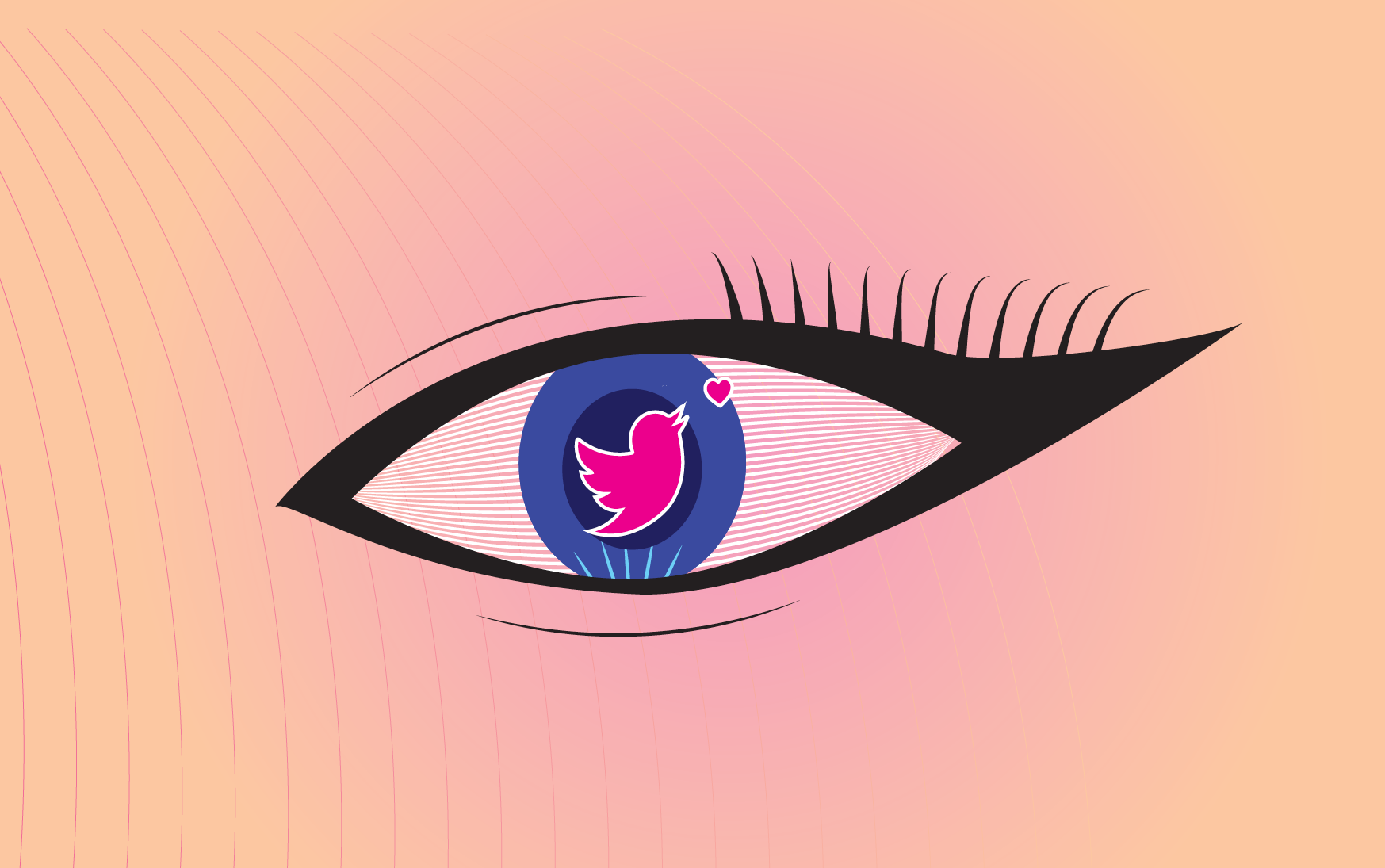“Ariana Grande did what she had to do in 2018,” someone on Twitter declares. Another claims: “god is a woman by Ariana Grande was the cultural reset we all needed.” For three years, these were the kind of Tweets that filled my timeline.
Sentiments like these are common on “stan Twitter,” where superfans assemble in micro-communities to express fervent love for certain celebrities. Each “faction”— of which membership which is self-appointed—hosts inside jokes and shared references with an ironclad allegiance. Incorporating diligent concentration and encyclopedic knowledge, stan culture works as a hub for the most fervent of fans, when IRL interactions can’t serve them enough.
“Stan,” as a term, was born from Eminem’s Dido-sampled track from 2000, which traces the evolution of a fan named Stan whose appreciation morphs into dangerous obsession. The term subsequently entered into mainstream slang, with Oxford English Dictionary adding the noun in 2017. Merriam-Webster followed suit in 2019 with “stan” as a noun and verb designating an “extremely or excessively enthusiastic and devoted fan,” or “to exhibit fandom to an extreme or excessive degree.”
Of all platforms, Twitter’s format is the most suitable for stans’ desires: instant connection and freedom to dissect every facet of the artist. Twitter’s fancams, threads, and Quote Retweets allow stan culture to thrive, with users easily expanding from each other’s thoughts. Hardly any other app is as simple and mainstream as Twitter for updates, chart data, discussions, and rumors.
My official dive into Ariana Grande subculture took place after the transition to college had taken its toll, with loneliness as the dominant theme. Grande’s Sweetener (2018), released exactly a week before the academic year began, became my constant companion with its reassurances of “Just keep breathin” and “The light is coming.”
I deemed it too embarrassing (and too much of an understatement) to share “I like Ariana Grande” as my fun fact in new social situations, when friends and family were well aware of my long-held investment. The internet became the best place to express my passion. Only there was my passion toward the singer and her music validated and respected.
Content surged with the surprise announcement of thank u, next (2019), and I forged into the tide of stan culture with a definitive step to open an account of my own—separate from my personal one and specially designated just for everything Grande.
Soon, “bop or flop?” wars, “What Ariana song does this pic remind you of?” inquisitions, and “remember when Ariana Grande…” rewinds bombarded me consistently with every new refresh. The ecosystem of these specialized communities include power players. Larger accounts have venerated reputations and the achievement of (often multiple) interactions with the artist, leading to a more authoritative stance based on proximity. They get the most engagement, with Twitter often recommending their content based on your interests and mutual friends. Running an account with followers in the thousands is no small matter—Fader described the most influential as “the best historians, critics, and marketers an artist could ever hope for.”
Being a stan isn’t just about loving a figure: It entails knowing their career and personal life, defending all projects, and banding together for “streaming parties” to boost the artist’s Billboard chart ranking.
I spent countless hours using my detailed knowledge of Grande to integrate myself into her stan Twitter sphere: editing stills from my favorite music videos, retweeting collages, and answering questions about her career. But the time spent was worthwhile. The space acted as a creative outlet and a safety net. I knew others would welcome and rejoice with me as soon as I switched from my personal account to just another Grande-oriented account. Worries of others judging my fascination with her hairstyle evolution dissolved instantly.
Stans are well aware of the rush to reply when a Tweet notification from Grande appears, in the hopes of being noticed. Stans can understand the shaking exhilaration I experienced when I became mutuals and DMed with Grande’s childhood best friend Courtney Chipolone.
In a galaxy surrounding one star, you have to make yourself noticeable, whether through keeping one recognizable profile picture or capitalizing on your support of a particular song. Only when one has gathered a following in the thousands can you feel beloved and protected enough to perform a “face reveal,” in which a user’s own face replaces their chosen Grande icon. The decision is an act of vulnerability—shedding one’s anonymity means casting off a level of safety that also enables users to lash out and mount tirades against celebrities with minimal fear of accountability.
Conversations on Stan Twitter were often mundane, but the most worthwhile, I found, came from release nights or events at which Grande was set to appear. I waited patiently in May 2020 for “Rain On Me” after rumors of her collaboration with Lady Gaga spread. When her website’s countdown expired for Positions (2020), releasing both the album and a music video, I and the rest of the Arianators rushed to Twitter. The feed, with heavy use of all-caps, praised “pov” referencing “ghostin’” and her casual execution of the elusive whistle note in “nasty.” Fans leaped to change their icon pictures to Grande’s newest looks.
But as much fun as it is to praise Grande’s newest pictures, pore over her multiple outfit changes in a music video, or delight in a mashup of all the times she’s said “yuh,” stan culture entails manifold instances of toxicity online, generating vicious arguments and surprisingly cutthroat language. The leap from fan to stan is a voluntary declaration; you turn your idealization into a significant part of your identity, and assumed intimacy and automatic ownership becomes the norm. It’s understandable to see how any non-effusive comment made toward one’s idol has the potential to be seen as a personal attack.
Stans are quick to hostility against perceived antagonizers even within their ranks: lobbing slurs or death threats at other users and artists when Grande went home award-less after the 2020 Grammys. Stans mobilize in defense, often to the detriment of the figure they seek to protect. What complicates matters further is the presence of young users, early adolescents whose maturity levels are not prepared for the barrage of scandals and foul language. For instance, an infamous debacle took place with a journalist who raised an eyebrow at Grande’s view of critics. Arianators amassed, DMing death threats and hate speech. Grande herself stepped in to directly message the journalist and condemn the extreme behavior.
This type of blind defense is still typical of stans, who fiercely support all aspects of a celebrity and are willing to tear down others in the process. What type of loyalty would demand this cost? Some artists, like Mitski, have confronted the difficulties of fans’ actions: “It’s terrifying to have a big group of strangers acting on my behalf in ways I’d never act myself, and I don’t even seem to matter in the equation.”
Selena Gomez has taken a similar approach. When supporters started bashing her ex’s new wife in the wake of Rare (2020), she took to Instagram. “It doesn’t matter what the situation is. If you’re my fans, don’t be rude to anybody, please,” she pleaded. But it seems unfair to expect artists to handle their millions of fans every time new artwork comes out, from which fans can—and do—extrapolate.
Complete silence, though, is hardly admired. Just look at the it-girl of 2021, Olivia Rodrigo, whose silence on the bullying of the assumed object of her heartbreak-centered debut album Sour has drawn suspicion. Some fans wished she had spoken up more explicitly, but Rodrigo dismissed the drama regarding her real-life costar as mere conjecture. What obligations do artists have toward managing their fans? How do we define the conditions necessary to step in, if at all?
The bigger question should perhaps be why stans felt it necessary—and appropriate—to send Rodrigo’s co-star Joshua Bassett hate in the first place (creating stressors for the young actor, potentially factoring into his hospitalization, Bassett said). 2021 saw a reignited crusade against Jake Gyllenhaal with Taylor Swift’s re-release of Red and the extended “All Too Well.” He and other exes have spoken out against the abuse they have received from Swifties.
Stans take up arms on behalf of their beloved, even when those public figures never asked for defense. What does that say about our own relationships to our idols that feral, feverish anonymous threats are the instinctual urge?
Being a stan first had a disparaging lens, with Eminem’s Stan descending into rage against his idol. Over time, “stan” has developed a more neutral connotation and may be a label proudly worn, but its origins show the harm it harbors. We should be conscious of the environment we are fostering online—especially in communities initially built from admiration. Being a stan should be fun, with community and celebration. Is it too late to undo entrenched practices?
I am proudly a walking almanac for anything remotely Grande-related. But the most recent major Grande headline left me conflicted: Online vitriol poured out after Grande posted pictures with a markedly Asian aesthetic in December. My “For You” page, ever the clever algorithm, showed me consecutive TikToks mocking her Asianfishing. Arianators protested against the attacks, while non-fans laughed in the face of what they deemed stale arguments of it’s just makeup, or it’s the editing on the photos. I determinedly watched every perspective, from the haughty to the informative, knowing that non-stan voices were probably able to provide the most objective and comprehensive critiques.
Culture is intertwined with society and its complicated dynamics. Especially with issues of racism and cultural appropriation, audiences should hold public figures accountable to the ways they may err. However, the noise of stans’ overheated debate and immediate denial can end up lacking any conducive conversation. The ways Grande, and so many others, inadvertently repurpose others’ culture is an issue that sometimes extends beyond them, and these important social critiques won’t be useful if they come from personally affronted stans—who are coincidentally sending each other death threats and racial slurs.
Even though I find it instinctual to praise her artistry after over a decade of doing so, I believe a healthy dose of separation is necessary. I admit the sticky nature of her reputation and past missteps in culture. Buzz about Grande has reminded me not just of the bias I carry, but also the importance of consistent reflection toward my expectations and faith in her (and other revered cultural icons). It’s dangerous to think them faultless.
And the shortcomings of stan Twitter tend to make their way back to the celebrities themselves. The sheer amount of conversation can be overwhelming, and so Grande’s quiet but definitive exit from Twitter, though unexpected, is not shocking. Public sharing tends to turn for the worse, with every post evaluated with scrutiny. Even her comments on Instagram are limited.
In the wake of her online farewell, stans are coping the best they can, with countless expressions of missing Grande and lamenting “the death of Ariana Stan Twitter.” I myself have long abandoned the account I once checked so diligently. As the world condemns the evils of social media and celebrities draw away, stan accounts have stepped in to compensate for the lack of their main source of vitality. Still, I can’t help but reminisce on the days when Grande would routinely engage with her fans, acknowledge their jokes at her expense, and wish her fans a quick “love u.”
But maybe this retreat is a time to follow suit by taking a pause and re-evaluating fanbases. Fandoms can easily overstep boundaries, and stan culture needs major fixing: cutting out toxicity, fixing online protocol, and redefining unhealthy relationships over the internet. Stans come to celebrate and find community, but we should also think about how to maintain, or rebuild, healthy relationships with artists. We should think about how we can hold our beloved celebrities accountable, without fearing and preparing for backlash from fellow stans. Taking these steps are essential in building a healthier online culture.
I can love Ariana Grande enough to want to know the respective designer and price behind every pair of boots she wears. But I can also do so without seeing every criticism of her as a vicious personal attack, perhaps a lesson that Stan Twitter should absorb more comprehensively. If you stan everything, what do you stand for in the end?





i found this very relatable- i’ve been deep on stan twitter as well, mostly for kpop. i’ve since found that as fun as it can be to discover and follow celebrities you really like, it’s much healthier in the long run to do so from a decidedly “fan”-esque position, if that makes sense. all in all, amazing piece!! well done.